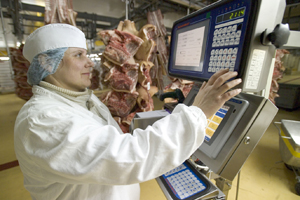Smithfield in Chinese hands – Is it a bad development?

The month of May surprised the US agricultural community as Smithfield, the world’s ?largest pork producer will most likely be acquired by a Chinese company. Despite ?protests, the deal should be positive for Chinese customers and the US livestock sector.
At the end of May, China’s largest meat processor, Shuanghui International Holdings, also known as the Shineway Group, agreed to pay $4.7 billion to acquire Smithfield Foods, the world’s largest hog farmer and processor. The deal is the biggest Chinese takeover of an American company in history.
The mega-pork deal immediately caused hand-wringing and outrage among Americans who fear growing Chinese dominance in the global economy. However, many analysts grudgingly agree the deal will be good for Smithfield, good for the US pork sector.
Smithfield has twice as much revenue as its Chinese suitor, but sports a much smaller market value. China’s consumers are becoming wealthier and are adding more pork to their diet, while the market for pork in the US is stagnant.
The US pork industry is already highly concentrated, with Smithfield and four other companies controlling nearly three-quarters of America’s pork processing industry. Any US company that had coveted Smithfield would have had to face government antitrust hurdles. Shuanghui will face regulatory scrutiny through the Committee on Foreign Investments in the US, which looks closely at these acquisitions.
China owns $1.2 trillion of US federal debt, the most by far of any foreign nation. But this has nothing to do with America’s national debt. It has everything to do with building a better supply chain that moves American pig meat into the mouths of prosperous, happy Chinese customers. The US pork industry has struggled under the weight of high corn prices, which amount to around two-thirds the cost of raising a pig.
Scaling up
The deal was announced even as the Chinese government publicly committed to scaling up its own domestic pork production. Xiaoping Zhang, country director for the American Soybean Association in Beijing, says China’s backyard farms account for 40% of the country’s pork production. Small-scale inefficiencies make it expensive to grow a hog in China. Herd health has become a problem, so many small-scale farmers left the business.
“When these backyard farmers quit, it caused higher prices, and that was incentive for outside investment from both industry and the Chinese government,” says Zhang.
China’s government hopes that, by 2015, 80% of China’s pork will come from so-called ‘scaled-up’ domestic farms that will produce 500 pigs per year, compared to today’s average small-scale output of 50 pigs per farm per year.
Trade opportunities
Smithfield now produces half its hogs without the feed additive ractopamine, a lean muscle promoting drug that has been banned in China and Russia. This deal, combined with the racto-free pig production, should allow Smithfield to ship even more pork to China.
The acquisition provides a unique opportunity for American political leaders to pressure China into trade reforms. They want China to relax its ban on ractopamine, clearing the way for even more pig meat imports.
Unlikely bedfellows
While China and the US don’t always see eye to eye politically, the Smithfield deal further nudges the world’s two superpowers to get along. It means China has a vested interest in the well-being of the American economy.
The Smithfield deal will help China get what it desperately needs: Respect, through the Smithfield brand. Chinese officials have been stung over and over by food safety scandals and were utterly embarrassed earlier this year when dead pigs were found floating in rivers near Shanghai.
Smithfield’s superior technology, phytosanitary measures and efficiencies will help China move its dubious food safety policies more in line with the western world. America’s pork production has been refined over decades into a system of mass production similar to making cars or televisions. Last year, 62% of the hogs in the US were raised on farms with at least 5,000 head, according USDA. They’re often housed in vast, climate-controlled buildings, fed specialised diets of corn and soybean meal, and processed into bacon and ham in highly mechanised factories designed to ensure the meat is free of disease and contamination.
Smithfield plants have capacity to slaughter as many as 110,000 hogs a day. Its control of each stage of production helps the company trace back and address any problems with pathogens. “Their traceability is superb,” says John Mabry, an Iowa State University professor who specialises in swine genetics.
China, according to the US Meat Export Federation, has some 14,720 pig slaughterhouses compared with about 600 in the US. Last year, the US sent 431,145 metric tons of pork worth $886 million to China. The deal could strengthen US pork prices as pork exports increase. That, in turn, will take more pork off the US domestic market and potentially raise the price of live hogs.
It’s positive for Smithfield and the US pork industry. American grillers may not be as thrilled.
Source: Pig Progress magazine. 26.5 (2013).











